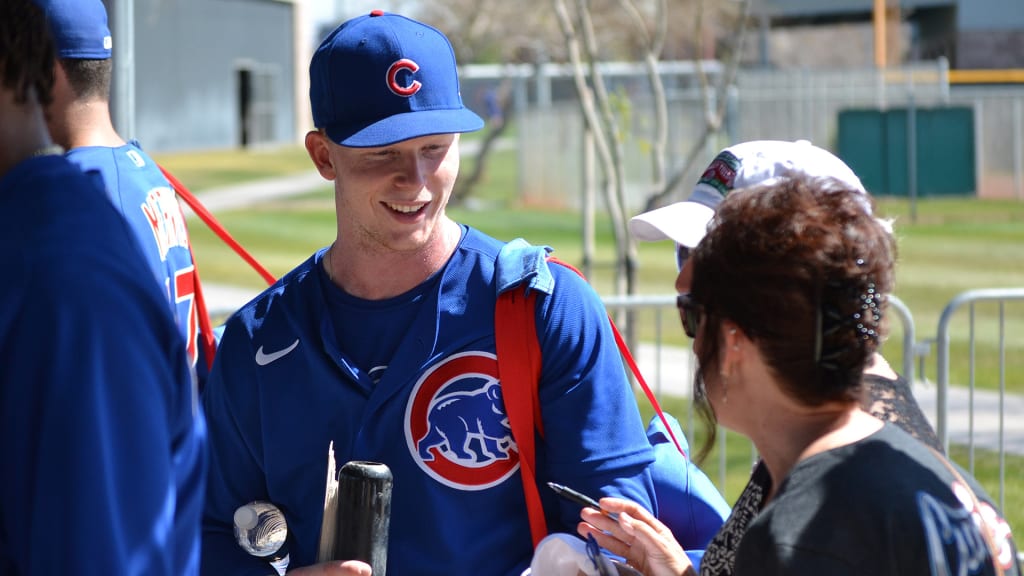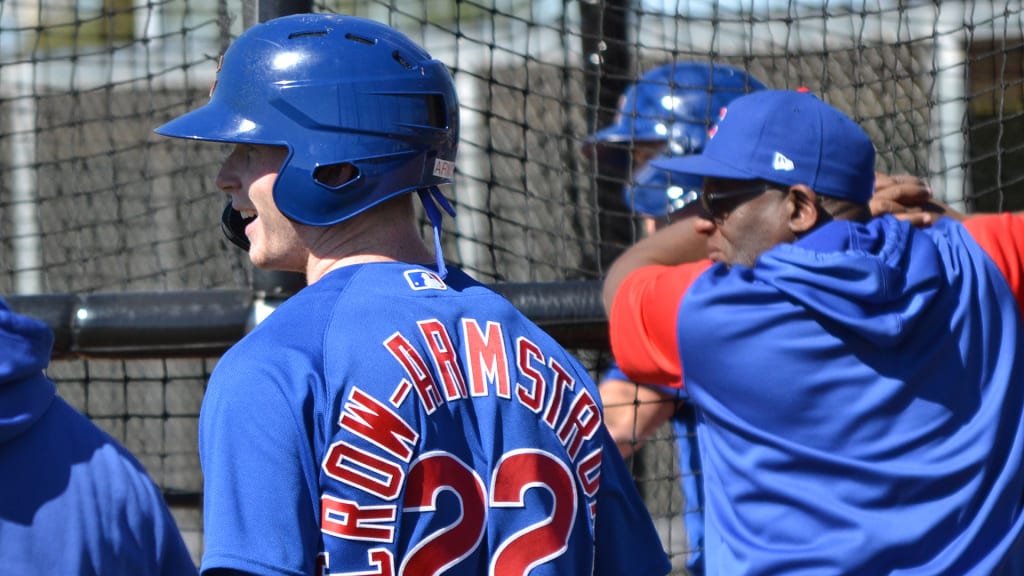MESA, Ariz. -- Pete Crow-Armstrong was in the car, heading to meet his parents for lunch on the day his baseball life changed last July. That was when the young outfielder learned he had been traded from the Mets to the Cubs.
"I was like, 'What in the world?'" Crow-Armstrong said. "I didn't hear about this at all. I was just kind of surprised, freaking out, taken aback a little bit."
It was July 30, Trade Deadline day, but why would Crow-Armstrong think he was going to be on the move? He was in the middle of rehabbing a season-ending injury to his right shoulder with only six professional games under his belt.
From the Cubs' side of things, Crow-Armstrong -- an elite defender with plus speed and quick wrists that lend to a line drive-generating swing -- had been on the radar since before the 2020 MLB Draft. As Chicago reeled in prospects via a series of blockbuster deals last summer, he was the name circled from the Mets' system.
"With each trade," Cubs president of baseball operations Jed Hoyer said after the deal, "we targeted players we really liked, and we wouldn't really move from that position."

New York agreed to ship Crow-Armstrong -- now the No. 5-ranked prospect in the Cubs' system by MLB Pipeline -- to Chicago in exchange for shortstop Javier Báez and righty Trevor Williams. Suddenly, that lunch with his parents became even more memorable.
Crow-Armstrong's mom, Ashley Crow, is an actress who baseball fans know as the mom from the movie "Little Big League." His dad, Matt Armstrong, grew up in Naperville, Ill., and convinced his son to jump on the Cubs' bandwagon in the years leading up to the 2016 World Series triumph.
Needless to say, it was fun for him to share the news with them that he was headed to Chicago.
"It was really cool," Crow-Armstrong said. "You can't really dream that up. It was a very interesting day -- a great day."
The Cubs considered Crow-Armstrong for the No. 16 pick in the 2020 Draft, but they ultimately used that selection on prep shortstop Ed Howard. The Mets snagged Crow-Armstrong three picks later out of the Harvard-Westlake baseball factory -- big leaguers Jack Flaherty, Max Fried and Lucas Giolito are all products of the Southern California high school -- and signed him with a $3.359 million bonus.
Crow-Armstrong's senior season was washed away by the pandemic, and his pro debut, which began with him hitting .417 (10-for-24), barely lasted a week. While playing in Daytona for the Low-A St. Lucie Mets, the center fielder injured his non-throwing shoulder on a slide into third base. He woke up extremely sore the next day and wound up undergoing surgery to repair a torn labrum.
"Popped out, popped in. Tore some stuff," Crow-Armstrong said of the shoulder setback. "It could've happened on any play in my entire life. It just happened to be that day."
Crow-Armstrong, who will turn 20 on March 25, said it was tough at times to watch other players head out for normal batting practice during the Cubs' offseason prospects program in Arizona. Still, he tried to find ways to keep working on his development with Chicago's hitting instructors over the winter.

"He's very open," said Rachel Folden, a Minor League hitting coach for the Cubs. "He's obviously a high-level prospect, has a lot of eyeballs on him, probably made some pretty good money at this point. So, for him to just be so open, like, 'Hey, whatever it takes to get me to the big leagues, let's go.'
"And then, just his determination and work ethic, it's pretty special."
Crow-Armstrong was cleared to begin a hitting progression in November and is now a full participant in the Cubs' minicamp ahead of Minor League Spring Training. Apart from tracking his workload, Chicago has let the outfielder train freely.
During the months he could not take swings, Crow-Armstrong and Folden had lengthy conversations about approach and situational hitting. Crow-Armstrong said there was also a lot of tracking work.
"All of the rehab stuff forced me to take a step back," he said. "And I think that I did. I was patient through it all. And once I got the chance to start doing stuff, it felt wonderful again."
Folden noted that the Cubs have worked with Crow-Armstrong on finding ways to keep his barrel in the zone longer, given the quickness of his swing. The outfielder said they have made adjustments with his hands to help the bat give "angle and direction" to the ball.
"He's so explosive, which is a great thing, right?" Folden said. "It's just making sure that his barrel stays working through the middle of the field so he can cover more pitches."
So far, the club has loved the early results.
"I think the biggest difference with Pete this year," said Justin Stone, the Cubs' director of hitting, "is he might have the biggest exit velocity jump of anyone we have in camp. He's just way more physical. He's healthy. That's going to make a big difference."


